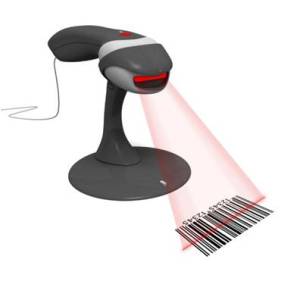David Mackley looks at why the largest retailers use technology and whether the same benefits can be realised by independent retailers.
Major Retailers have used technology for years to deliver business improvements
When hurricane Ivan was heading towards the Florida coastline, Wal-Mart knew there would be a rise in demand for Kellogg® strawberry Pop-Tarts®. Drivers delivered Pop-Tarts to stores in the area in time to accommodate the rise in demand.
The major retailers like Wal-Mart have been using technology for years to improve their businesses, but what are the main ways in which they benefit from technology and can an independent store benefit in a similar way? Here are some of the key areas.
1. Save money on inventory
Reducing stock costs is vital for every retail business. Wal-Mart tightly control stock using computer systems to keep the number of products in each shop to an optimum level. This reduces money tied up in stock and reduces the risk of being left with stagnant inventory.
Independents can also save thousands on inventory costs by tighter controls and smart ordering, here are a couple of ways to strategically improve inventory.
- Smart replenishment. A computer system can make it so much easier to re-order. This means that replenishment can be done in smaller quantities and more frequently, reducing stock holding and exposure to risk.
- Knowing the ups and downs. A computer system keeps tabs on all products sold and when they were sold, allowing the owner to identify trends easily and stock up or down accordingly.
2. Develop better marketing initiatives
Many marketing initiatives rely on sales, discounts, bundles and twofers (two for the price of one). Giving away profit is essential at times to move on stagnant stock or possibly to generate more footfall, but it is also very costly. For example, on a product marked up by 1.6, then put in the sale at 20% discount, twice as many products need to be sold to maintain the level of profitability.
So, it is important to track which marketing initiatives work. Repeating ineffective promotions just loses money. The big stores closely track the performance of their marketing activity by looking at; a) the rate of take-up for sale items, b) changes in the number of customer purchases and c) average customer spend during the promotion. Independents can do the same with a good computer system. The result will be more successful marketing campaigns and less wasted money on unproductive discounts.
3. Increase margins by negotiating better deals with suppliers
Large stores use accurate sales data to negotiate the best deals with suppliers. They will compare performance of different suppliers at a profit and revenue level. Reducing the cost of a product can increase profit margins in one of two ways; a) maintain the price of the item and deliver more profit from reduced costs, or b) use the reduced costs to lower prices and increase demand.
Computers allow “evidence based supplier negotiations”. For example, a supplier’s products may be underperforming in a category or may be less profitable compared to others. Using a computer system to give precise evidence provides excellent negotiation material.
4. Telling you more about your customers
Technology allows retailers to make strategic decisions based on point of sale information. Wal-Mart has looked at which products tend to be purchased together. For example they decided to put bananas both in the produce and the cereal sections. Many consumers would get to cereal and realize that they needed bananas. Not all were willing to go back and get them, but bananas will be bought if located next to cereal. The same information is available to independents in a good computer system.
5. Streamline business processes and better business management
Businesses must adapt to change. Consumer tastes and trends change constantly and successfully managing a business through this continual change takes time. If managers are obsessed by menial day to day tasks, they will never get enough time to spend managing the business. It is a mistake many business managers make.
Companies use technology to automate the menial tasks. It makes the workforce more efficient and releases time to do more important activities. For example, replenishment should be a very fast and slick process. A couple of clicks and it should be done. Yet many retailers with poor internal processes can waste hours each day on this activity. Computer systems are used the world over to make organisations more efficient. Independents that use a good computer system will know how much time it can free up. Not only can the retailer focus on managing the business better, but the computer also provides quality information to help.
In summary: 5 benefits technology can bring to large and small retailers…
We have looked at five benefits technology can bring to large and small retailers. There are others as well that can deliver sustainable business improvement such as better customer service, reduced shrinkage, managing and incentivising staff and of course utilising the internet to broaden the shop window. The priority of each is dependent on where the business is today and the opportunities open to it.
Wal-Mart is the biggest and most successful retailer in the world. They claim that their success is largely due to technology. Now, as prices for computer systems reduce there are very real and exciting opportunities for independents to use affordable technology to achieve similar benefits.
Author: David Mackley Source: retailchampion
***
- Related posts on TRG International's blog:
http://blog.trginternational.com/bid/125656/The-Whys-of-Implementing-POS- Software
- Interested in leveraging retail technology? TRG International can provide you with a solution.
 English
English  Vietnamese
Vietnamese 


